Living Spaces
İlker Cihan Biner
There is a direct relationship between the way an esthetic practice is done and the work that is created.
What occurs if this stance does not exist or if the law of representation drives the work?
We are confronted with a change in the conception of what we can call nature. The anthropocentric view of nature, molded with the perspective of power, is anchored in limited places and reduced to productivity, sensitivity, and law-keeping.
Expressions such as “inspired by nature,” “imitation of nature,” and “law of nature” bear traces of the so-called representational art regime. The work emerges only when the technique is based on a normative relationship. The sensible and the thinkable take place on normative grounds. It can also be called an order in which forms, silhouettes, and objects contain constancy.
Yet, esthetic practice transcends the rules of representation. While the work punctures holes in the ordinariness of everyday life, it is not limited to human beings. Still, it goes as far as staging non-humans or relations with animate/inanimate beings navigating towards a headless, singular, impotent position.
In Damla Yalçın’s installation Living Spaces, a symbiotic organism known as SCOBY—”Symbiotic Colony of Bacteria and Yeast” —plays a central role.
A symbiotic relationship represents a network of mutually beneficial connections between living entities. It manifests when bacteria and yeast unite to generate matter in a particular context.
The delineation between human and non-human becomes blurred as the artist forges connections with these living beings. In this context, it is especially noteworthy to emphasize the camaraderie established with SCOBY. Top of FormBottom of FormCertainly, delving into the connection of such an association with memory is imperative. Indeed, when memory is factored into the equation, the study becomes more detailed.
The sketch of the artist’s house in Ankara, where she grew up between 2001 and 2013, resembles the shape of the vessels containing the liquid prepared to produce SCOBY. In this way of making, there is a break from the classical understanding of time. Because there is no straight line from the past to the future, that does not lose its intensity. The house Yalçın lived in is a sediment in her mind. The scenes from the house that are repeated or experienced affect the intensity of the experiment, which is effective in the formation of SCOBY. The process of the formation of esthetic practice thus develops in the web of a unique experience. The interplay between the act of creating the artwork and its subsequent existence moves away from the logic of representation and is marked by the effects of aesthetic comprehension.
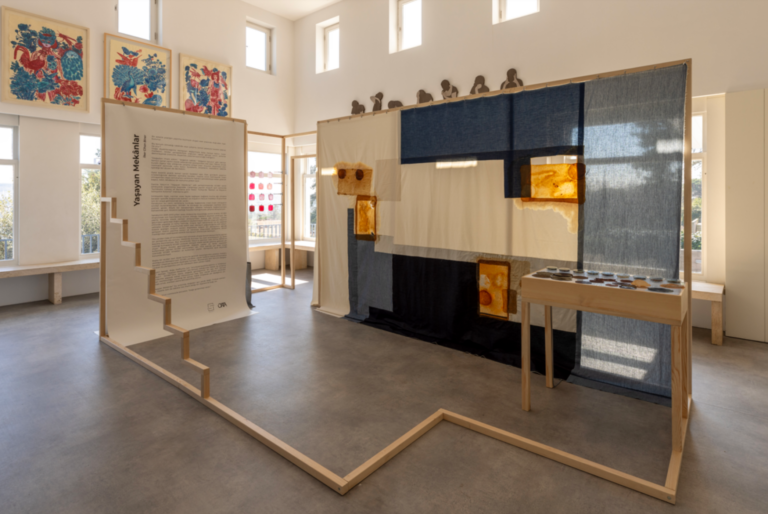
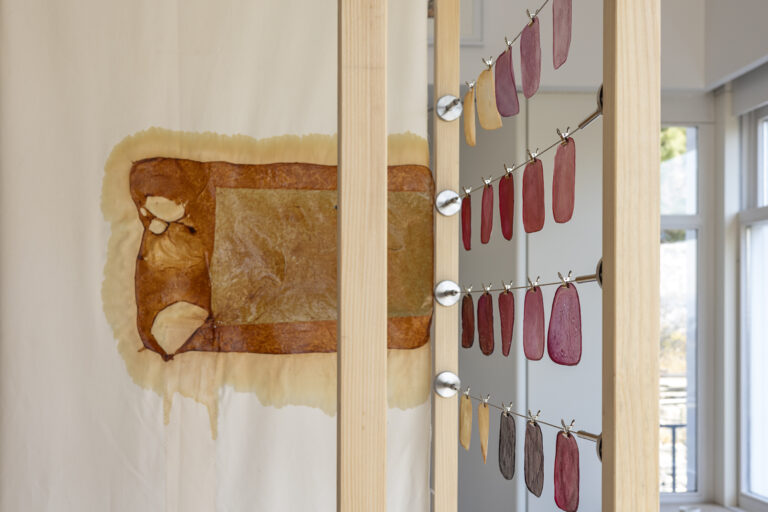
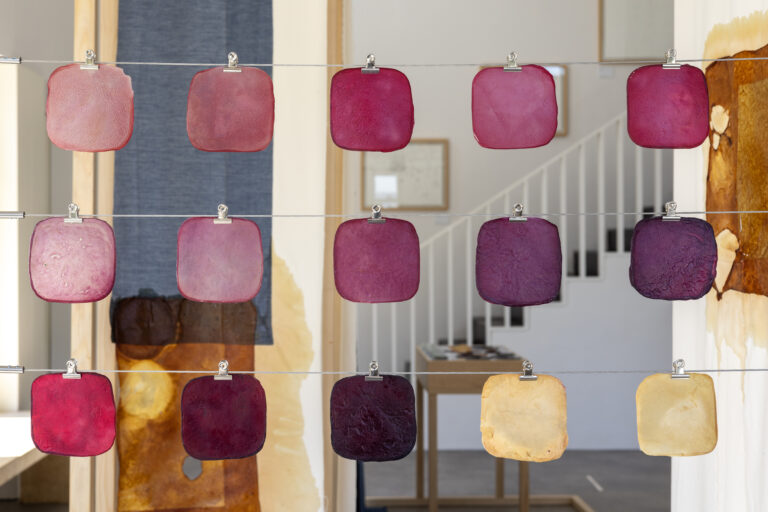
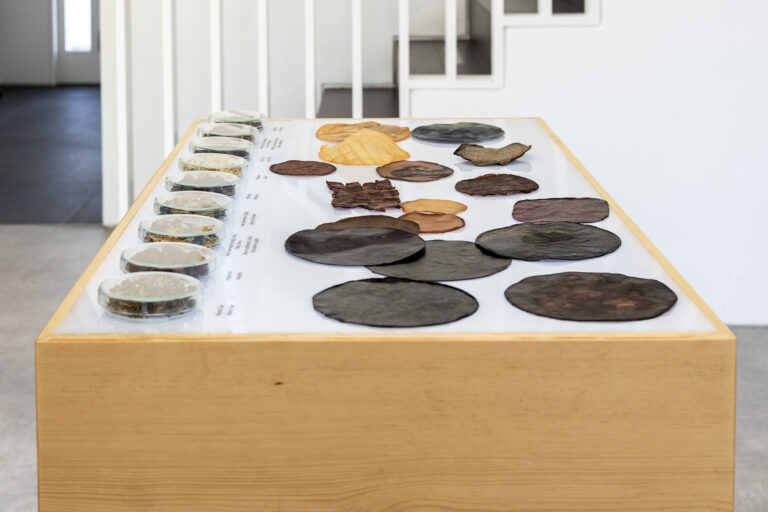
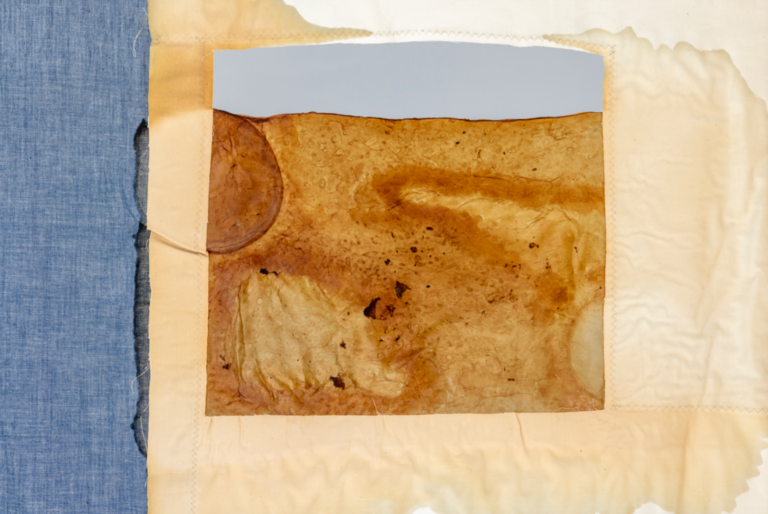
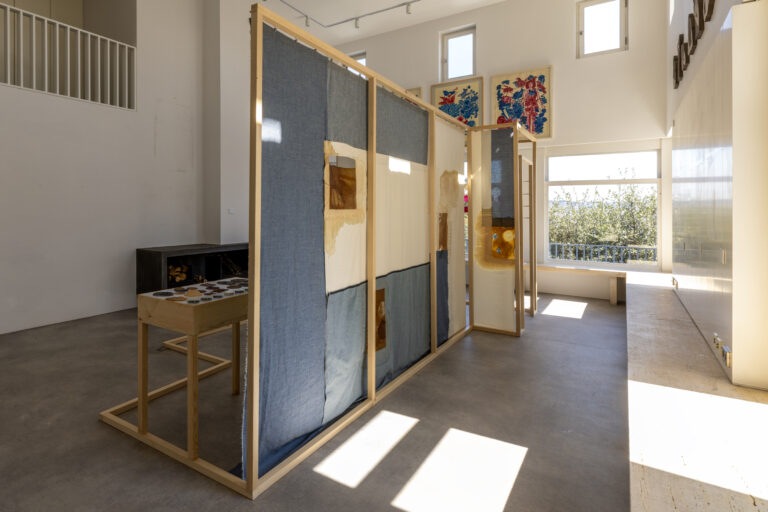
Damla Yalçın, Living Spaces, 2024.
Photographs: Nazlı Erdemirel
On the other hand, there is an installation made with wooden constructions based on the sketch of Gate 27. This special installation takes shape in three different dimensions. On some walls, there are SCOBY surfaces entangled with fabrics produced by ORTA, the company that sponsors Yalçın, in the form of curtains. On another wall, there are SCOBY pantones made with different teas and recipes. Again, SCOBY samples and the teas used are positioned on the table belonging to the work in a way that is open to experience.
From another perspective, the work takes the form of an invitation, creating a comparison and transforming the space into a receptor. SCOBY, the curtains, the teas are not just objects; they unveil themselves to the viewer and establish dialogues. This installation, which creates a wave of situations related to bio-art, creates a new field of interaction.
Gayatri Spivak called the notion of nature “that impossible thing that we may not desire”. What does nature mean when it comes to “Living Spaces?” Is the dance of the SCOBYs a thing we see in nature? Referring to the question, the emphasis on nature as something external, or “outside,” reflects an anthropocentric viewpoint. But the moment we call it a common-place, we transform nature into a shared, productive space.
In this sense, Living Spaces is not separate from nature. It has physical effects. Moreover, it has a bond of relationship that is inspired by nature.
Let me end with a quotation from Heraclitus: “Nature loves to hide.”
